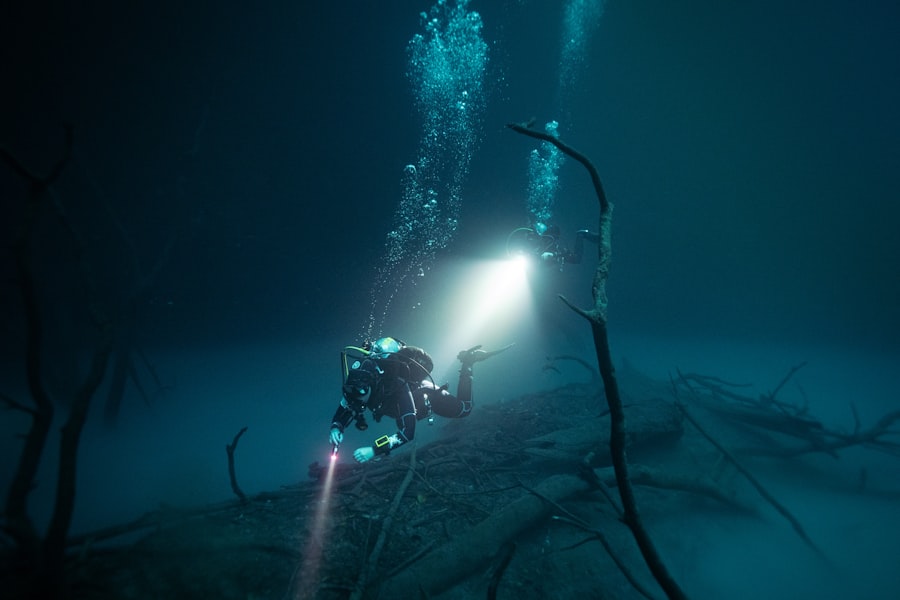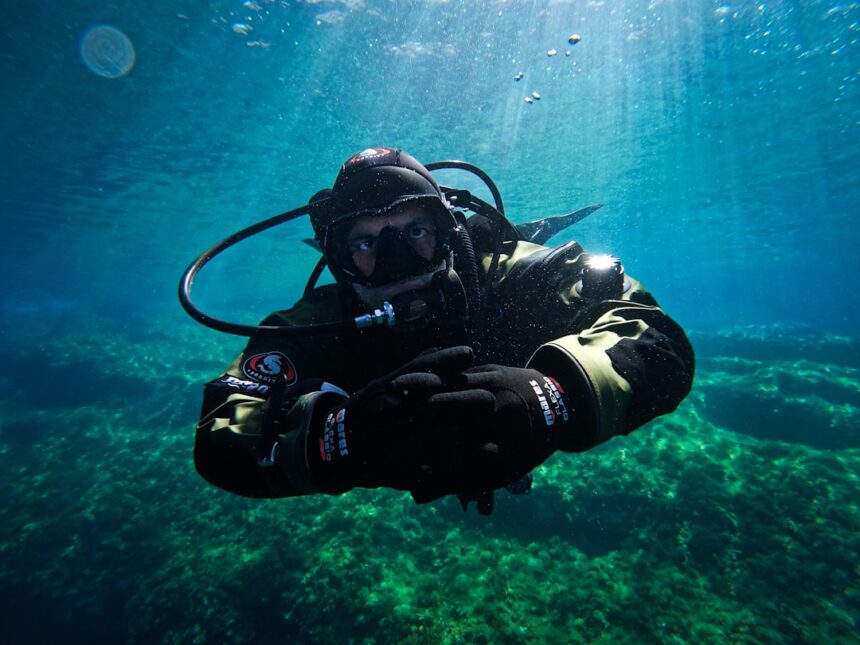Underwater stealth technology has undergone significant transformation since its inception, evolving from rudimentary designs to sophisticated systems that enhance naval capabilities. Initially, submarines were designed primarily for submersion and basic evasion tactics, relying on their ability to remain submerged for extended periods. The early 20th century saw the introduction of diesel-electric submarines, which marked a pivotal moment in underwater warfare.
These vessels, while innovative, still produced considerable noise and were easily detectable by enemy sonar systems. As naval warfare advanced, so did the need for stealth, leading to the development of nuclear-powered submarines that could operate at greater depths and for longer durations. The Cold War era catalyzed a race for underwater superiority, prompting nations to invest heavily in stealth technologies.
The introduction of advanced sonar systems and the need for countermeasures against enemy detection led to the refinement of submarine designs. Innovations such as anechoic coatings, which absorb sound waves, and improved hull shapes that minimize noise production became standard features. This period also saw the emergence of unmanned underwater vehicles (UUVs), which further expanded the scope of stealth operations.
As technology progressed, the focus shifted towards not only evading detection but also enhancing operational effectiveness through stealth capabilities.
Key Takeaways
- Underwater stealth technology has evolved significantly, from simple camouflage to advanced acoustic and magnetic signature reduction techniques.
- Underwater stealth technology is crucial in naval operations, allowing submarines and unmanned underwater vehicles to operate undetected and gather intelligence.
- Acoustic and magnetic signature reduction plays a key role in underwater stealth technology, enabling vessels to minimize their detectability and avoid detection by enemy forces.
- Advancements in materials and coatings have greatly improved underwater stealth capabilities, making it harder for adversaries to detect and track submarines and unmanned underwater vehicles.
- Propulsion systems are essential for underwater stealth, as they enable vessels to move quietly and efficiently, reducing the risk of detection by enemy forces.
The Importance of Underwater Stealth Technology in Naval Operations
The significance of underwater stealth technology in naval operations cannot be overstated. In modern warfare, the ability to operate undetected is crucial for strategic advantage. Stealth technology allows submarines and other underwater vessels to gather intelligence, conduct surveillance, and execute missions without revealing their presence.
This capability is particularly vital in contested maritime environments where adversaries are equipped with advanced detection systems. The element of surprise afforded by stealth can be a decisive factor in naval engagements, enabling forces to strike effectively while minimizing risk. Moreover, underwater stealth technology plays a critical role in deterrence strategies.
Nations equipped with advanced stealth capabilities can project power and influence without direct confrontation, thereby maintaining stability in volatile regions. The mere presence of stealthy submarines can deter potential aggressors from hostile actions, as the uncertainty surrounding their capabilities creates a psychological barrier. As geopolitical tensions continue to rise, the importance of maintaining a robust underwater stealth fleet becomes increasingly evident, underscoring its role in national security and defense strategies.
The Role of Acoustic and Magnetic Signature Reduction in Underwater Stealth Technology

Acoustic and magnetic signature reduction are fundamental components of underwater stealth technology. Submarines generate various sounds during operation, including machinery noise, cavitation from propellers, and even the sounds produced by water flowing over the hull. These noises can be detected by enemy sonar systems, making it imperative for modern submarines to minimize their acoustic signatures.
Engineers have developed advanced technologies such as quieter propulsion systems and sound-dampening materials that significantly reduce the noise produced by submarines.
Submarines generate magnetic fields due to their metal hulls and onboard equipment, which can be detected by magnetic anomaly detectors (MAD).
To counter this vulnerability, modern submarines are designed with materials and configurations that minimize their magnetic signatures. Techniques such as degaussing—wherein electrical currents are used to neutralize magnetic fields—are employed to further enhance stealth capabilities. By addressing both acoustic and magnetic signatures, naval forces can operate with greater confidence in hostile waters.
Advancements in Materials and Coatings for Underwater Stealth
| Advancements | Materials and Coatings | Underwater Stealth |
|---|---|---|
| 1 | Carbon Fiber Composites | Reduced acoustic signature |
| 2 | Specialized Polymers | Improved hydrodynamic performance |
| 3 | Advanced Ceramic Coatings | Enhanced resistance to corrosion |
| 4 | Smart Coatings | Active camouflage capabilities |
The development of advanced materials and coatings has revolutionized underwater stealth technology. Traditional submarine hulls were primarily constructed from steel, which not only contributed to noise generation but also made them susceptible to detection. In recent years, researchers have explored composite materials that offer enhanced strength-to-weight ratios while reducing noise levels.
These materials are often combined with specialized coatings designed to absorb sound waves and minimize radar signatures. Anechoic coatings have become a staple in modern submarine design. These rubber-like materials are applied to the hulls of submarines to dampen sound reflections and reduce the likelihood of detection by sonar systems.
Additionally, advancements in nanotechnology have led to the development of coatings that can adapt to environmental conditions, further enhancing stealth capabilities. As research continues into new materials and coatings, the potential for even greater advancements in underwater stealth technology remains promising.
The Use of Propulsion Systems for Underwater Stealth
Propulsion systems play a crucial role in achieving underwater stealth. Traditional propeller-driven systems generate significant noise and turbulence, making submarines more detectable by enemy sonar. To address this challenge, naval engineers have developed alternative propulsion technologies that prioritize stealth.
One such innovation is the use of pump-jet propulsion systems, which utilize a shrouded rotor design that minimizes cavitation noise while providing efficient thrust. Another emerging technology is the use of air-independent propulsion (AIP) systems, which allow submarines to operate without surfacing for extended periods. AIP systems can significantly reduce the acoustic signature of submarines by eliminating the need for noisy diesel engines during submerged operations.
These advancements not only enhance stealth but also extend operational range and endurance, making modern submarines more formidable assets in naval warfare.
The Integration of Underwater Stealth Technology in Submarines and Unmanned Underwater Vehicles

The integration of underwater stealth technology into both manned submarines and unmanned underwater vehicles (UUVs) has transformed naval operations. Manned submarines have long been at the forefront of stealth technology development, incorporating advanced features that allow them to operate undetected in hostile environments. The latest classes of submarines are equipped with cutting-edge sensors and communication systems that enhance situational awareness while maintaining a low profile.
Unmanned underwater vehicles represent a new frontier in underwater stealth operations. These remotely operated or autonomous vehicles can be deployed for various missions, including reconnaissance, mine detection, and anti-submarine warfare. UUVs benefit from their smaller size and reduced acoustic signatures compared to traditional submarines, allowing them to infiltrate areas that may be too risky for manned vessels.
As technology continues to advance, the integration of stealth capabilities into UUVs will likely expand their operational roles and effectiveness in naval operations.
Challenges and Limitations of Underwater Stealth Technology
Despite significant advancements in underwater stealth technology, challenges and limitations persist. One major hurdle is the ever-evolving nature of detection technologies employed by adversaries. As nations invest in more sophisticated sonar systems and other detection methods, maintaining an edge in stealth becomes increasingly difficult.
This arms race necessitates continuous innovation and adaptation within naval forces to counter emerging threats. Additionally, the complexity of integrating multiple stealth technologies can pose logistical challenges. The development and maintenance of advanced materials, coatings, and propulsion systems require substantial investment and expertise.
As naval forces strive to enhance their underwater stealth capabilities, they must navigate these challenges while remaining vigilant against potential vulnerabilities.
The Future of Underwater Stealth Technology: Innovations and Trends
The future of underwater stealth technology is poised for exciting innovations and trends that will shape naval warfare in the coming years. One area of focus is the integration of artificial intelligence (AI) into underwater operations. AI can enhance decision-making processes by analyzing vast amounts of data from sensors and providing real-time insights into potential threats or opportunities for engagement.
This capability could significantly improve situational awareness while maintaining stealth. Another trend is the exploration of biomimicry in submarine design. Researchers are studying marine animals known for their stealthy movements—such as certain species of fish—to develop new hull shapes and propulsion methods that minimize noise production.
Additionally, advancements in quantum technologies may lead to breakthroughs in detection evasion techniques, further enhancing underwater stealth capabilities.
The Impact of Underwater Stealth Technology on Maritime Security
Underwater stealth technology has profound implications for maritime security on a global scale. As nations invest in advanced submarine fleets equipped with cutting-edge stealth capabilities, the balance of power in regional conflicts may shift dramatically. The ability to operate undetected allows nations to conduct intelligence-gathering missions or launch surprise attacks without warning, potentially destabilizing existing security arrangements.
Moreover, the proliferation of underwater stealth technology raises concerns about arms races among nations seeking to enhance their naval capabilities. As countries develop increasingly sophisticated submarines and UUVs, there is a risk that tensions could escalate in contested maritime regions. This dynamic underscores the importance of international dialogue and cooperation to establish norms governing the use of underwater stealth technology in order to mitigate potential conflicts.
International Efforts and Collaborations in Advancing Underwater Stealth Technology
International collaboration plays a vital role in advancing underwater stealth technology across nations. Joint research initiatives between allied countries have led to significant breakthroughs in materials science, propulsion systems, and sensor technologies that enhance underwater operations. Collaborative efforts not only pool resources but also foster knowledge sharing among experts from different backgrounds.
Furthermore, multinational exercises involving submarines and UUVs provide opportunities for navies to test their capabilities while learning from one another’s experiences. These exercises help establish interoperability among allied forces while promoting best practices in underwater operations. As global security challenges continue to evolve, international cooperation will be essential for advancing underwater stealth technology while ensuring responsible use within the framework of international law.
Ethical and Legal Considerations in the Development and Deployment of Underwater Stealth Technology
The development and deployment of underwater stealth technology raise important ethical and legal considerations that must be addressed by policymakers and military leaders alike. The potential for increased military capabilities can lead to unintended consequences if not managed responsibly. Questions surrounding the use of unmanned underwater vehicles for surveillance or combat operations highlight concerns about accountability and adherence to international humanitarian law.
Moreover, as nations invest heavily in advanced underwater technologies, there is a pressing need for transparency regarding their intentions and capabilities. Establishing clear guidelines governing the use of underwater stealth technology can help mitigate risks associated with escalation or misinterpretation during military engagements. Ultimately, fostering dialogue among nations will be crucial for ensuring that advancements in underwater stealth technology contribute positively to global security rather than exacerbating tensions or conflicts.
In conclusion, underwater stealth technology has evolved significantly over time, becoming an essential component of modern naval operations. Its importance cannot be overstated as nations seek strategic advantages through enhanced capabilities while navigating complex geopolitical landscapes. As advancements continue to shape this field, addressing challenges related to detection evasion, international collaboration, and ethical considerations will be paramount for ensuring responsible use within maritime security frameworks.
Underwater stealth technology has become a crucial aspect of modern naval warfare, allowing submarines and other underwater vehicles to operate undetected. For a deeper understanding of this fascinating subject, you can explore a related article that delves into the advancements and implications of such technologies. To read more, visit this article on In The War Room.
WATCH THIS! The Secret Russian Weapon That Terrifies NATO
FAQs
What is underwater stealth technology?
Underwater stealth technology refers to the methods and technologies used to make submarines and other underwater vehicles less detectable to enemy sensors and surveillance systems.
How does underwater stealth technology work?
Underwater stealth technology works by reducing a submarine’s acoustic, magnetic, and visual signatures, making it harder for enemy sensors to detect and track the submarine.
What are some examples of underwater stealth technologies?
Examples of underwater stealth technologies include sound-dampening coatings, advanced propulsion systems, and shape design to minimize noise and reduce the submarine’s acoustic signature.
Why is underwater stealth technology important?
Underwater stealth technology is important for military submarines as it allows them to operate covertly, gather intelligence, and carry out strategic missions without being detected by enemy forces.
What are the challenges of developing underwater stealth technology?
Challenges in developing underwater stealth technology include the need to balance stealth with other operational requirements, such as speed, endurance, and payload capacity, as well as the constant evolution of detection technologies by potential adversaries.




